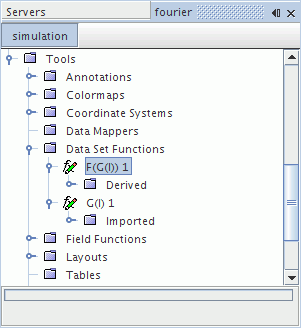Line Spatial Fourier Transforms
Line Spatial Fourier Transforms allows the creation of a matrix of energy densities dependent on wavenumber and frequency along a line probe.
These data set functions map signals from the spatial and frequency domains to wavenumber and frequency domains.

Line Spatial Fourier Transform Properties
|
Start Signal |
The start length for the length sampling of this object. |
|
|
End Signal |
The end length for the length sampling for this object. Clicking the
|
|
|
Padding Factor |
Specifies the degree by which the signal is zero-padded. The factor is a proportion of the original signal strength. |
|
|
Window Function |
Specifies the window function applied to the FT. The window function makes the signal periodic: it is guaranteed to be zero at both start and end. For most cases, apply a window function to a signal before applying an FT for best results. Available options:
|
|
 property customizer button activates a property customizer that lets you specify both the time value and the appropriate length units. If you have multiple data set functions, you can vary the settings of this property to sample multiple length intervals from the simulation run.
property customizer button activates a property customizer that lets you specify both the time value and the appropriate length units. If you have multiple data set functions, you can vary the settings of this property to sample multiple length intervals from the simulation run.